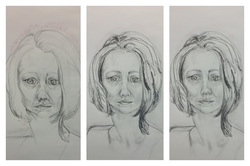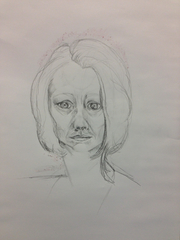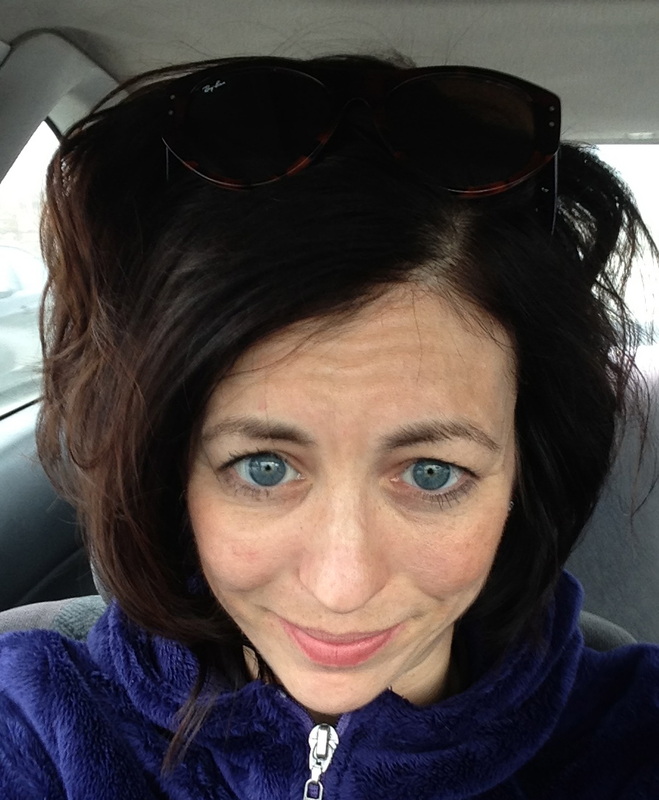|
"Breathe"... "BREATHE"... "BREEEEEATHE"...
This is how Anthony Fitzpatrick of Achieve NJ and The Department of Education started his presentation on SGO's at the AENJ conference. Ever since I left that room, breathing is far from my mind when thinking about SGO's. If you've been playing along, you read a few weeks ago that I wrote the SGO's for my middle school art department and I was all proud of what I'd done. I felt that I had written a prompt that would give us a true understanding of what our students really thought about ART. Little did I know then, I had made myself an impossible assessment to assess. So now I'm left in a maze trying to figure out just what I want to assess that is actually assessment worthy. Fitzpatrick suggested we think about our SGO's as standards based and narrow down the process by identifying the key content knowledge we want our students to walk away with. THIS IS A CHALLENGE. My curriculum is based on a thematic approach to art education where students are using artmaking to learn about themselves, to express memories, to understand their environment... Add to this, our middle school art courses are all survey based - exploring everything from the art elements and principles of design to art history to contemporary art making practices and let's not even get started on the variety of materials and techniques we address! I'm currently considering using a cumulative portfolio assessment as my SGO. But, I'm not sure what exactly I want to look for in that portfolio. Is my goal "drawing skills"? Is my goal "use of color"? Is my goal "understanding of human proportion"? I just don't know! And, even if my goal is one of those things, I'm not quite sure how to write a cumulative rubric that addresses a portfolio assessment. SIGH... If you've been reading silently from afar, now's the time to step out of the shadows and chime in with your thoughts. Are you writing SGO's? What are you doing? Art is such a specialized area and assessment in this content area is not as straight forward as a test. Let's collaborate here and help each other keep the state happy. Go on, you know you want to comment!
0 Comments
 Despite being extremely tired and leaving the house late, I managed to get to PAFA early for Thursday’s session. I found myself alone, with my self. Well, self portrait that is… I saw a resemblance of me in the image, but somehow older and more frail. Was this some sort of psychological message I was sending about my “self” or had I screwed up the image in some subtle, yet meaningful, way that produced the aged, fragile appearance? I got down to business measuring my face and comparing those measurements to the image using a pencil, a mirror, and my thumb. Turns out, though there may be some deep hidden psychological truth in my decrepit representation of self, I had actually drawn my nose way too long. This simple and relatively small mistake altered the entire image in a significant way. This was not a difficult fix – technically speaking. However, taking an eraser to a basically complete drawing that didn’t look horrible was a bigger emotional challenge than I had expected. I felt a strong sense of empathy for my students as I began erasing my hard work to make corrections. This is one of the greatest challenges in the art room – realizing that fixing it is more important that being done with it… and also, realizing that it is worth the time to make those corrections – not only for that image, but for future images as well. I am so thankful that I took these W.I.P. shots so I can see and remember the changes that were made to create the final image. Having this collection of progress shots will also be helpful to share the transformation of this drawing with my students. Realizing that my nose was too long was only the tip of the lesson I learned from today’s drawing, Today began with more ecorche carving. As we finished our work, we discussed how knowledge and understanding of the musculature of the face improves portraiture. We were instructed to begin work on a self portrait from observation using our knowledge of facial muscles.
Now, let me say this: I do not enjoy drawing portraits, and more specifically, I loathe drawing SELF portraits. I'm not sure where my displeasure with this task started but my main complaint is the difficulty - portraits are not easy. My experience today was very different. I felt like I was building my face in the drawing by focusing on the planes created by the muscles below the skin. This approach to portraiture has changed my thoughts on this genre of art and I feel strongly that there will be talk of facial musculature in my lessons this year. |
Lora DurrMiddle School Art Educator. Adjunct Art Education Professor. Non-Profit Arts Organization Board Member. Artist. Arts Advocate. Dog-Mom. CrossFit Enthusiast. Archives
October 2015
Categories
All
Other BLogging Art EducatorsThe Art of Education
The Luminous Page The Teaching Palette That Little Art Teacher Art Teachers Hate Glitter Adventures of an Art Teacher Mrs. Art Teacher Art with Mr. E Art is Basic Art Makes Kids Smart And, if you want more... visit Artists in Blogland for a full directory of art teacher blogs! |

 RSS Feed
RSS Feed


